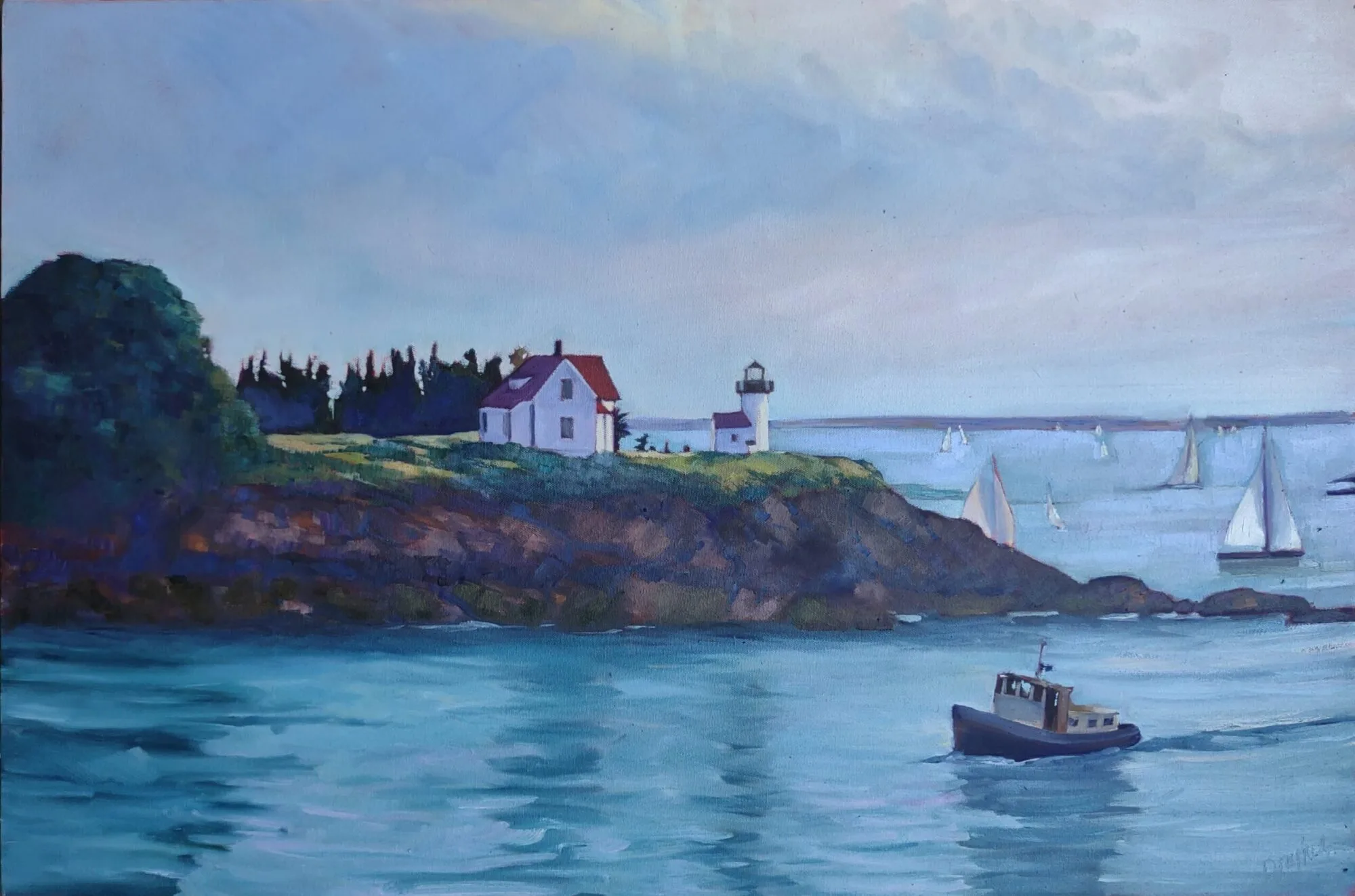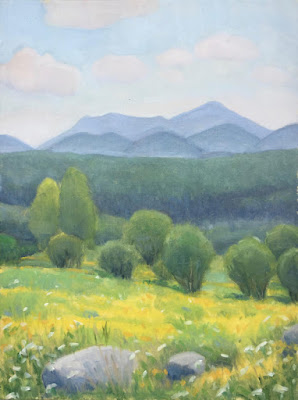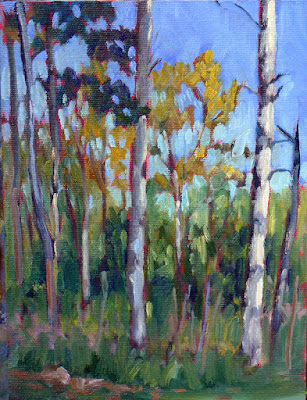In which our heroine reveals her shocking ignorance about evergreen species of Maine, and vows to do better.
 |
| I painted it, but I have no idea what it was. |
I had a visitor to my studio this week, a collector who also follows my blog. She read about my recent interest in
Eastern White Pines, and mentioned that they are Maine’s state tree. I was surprised, since I don’t see them in my little corner of the state.
“What is Maine’s state flower?” I asked her, figuring it would be either the
lupineor
rosa rugosa, both of which grow in wild profusion here. Turns out it’s the cone of the Eastern White Pine. It was adopted as the state flower in 1895, after it was used in the National Garland of Flowers at the 1893 World’s Fair.
This may be the Pine Tree State, but its natural trees include many more broadleaf species (52) than evergreens (14). They’re the same species as grow in my native New York, but here conifers provide a much greater percentage of the forest cover.
 |
| Sentinel trees, by Carol L. Douglas. Red pines, maybe? |
I don’t know evergreens as well as I know deciduous trees. This week, I’ve decided to learn about them in earnest.
We have more evergreens here because we’re closer to the taiga, the broad swaths of boreal forests that run in a ring around the North Pole. (There is no southern-hemisphere equivalent because there isn’t enough land in the proper latitudes.)
The boreal forests dip into the continental United States where it’s mountainous. Here in the northeast, that means along the Appalachians from northern New York to northern Maine. But mostly, they’re in Alaska and Canada.
 |
| The Dugs, by Carol L. Douglas. That’s a beaver dam in the southern Adirondacks. I can tell you the red flashes are soft maples, but I can’t tell you what the dark evergreens are. |
Coniferous trees are adapted to the taiga. They shed snow easily. Their needles are cold- and drought-resistant, with thick waxy coatings and very little surface area. They can turn photosynthesis on when the temperature goes above freezing on winter days. Broadleaf plants can’t exploit brief moments of warmth; they remain dormant after they shed their leaves. That limits their growing season.
The most obvious difference between
spruce and
pine is how the needles are arranged. The needles of spruces attach directly to the branches. Pine trees have needles in bundles called fascicles.
The needles of
balsam firs also grow individually. However, while spruce tree needles are sharp and flexible, fir needles are flat and blunt. Balsams are notable for their fragrance.
 |
| Another evergreen I painted without first asking its name. How rude! |
Tamaracks, or larches, are the only deciduous conifer that grows here. Their needles are three-sided and blue-green. They turn bright yellow in autumn.
I only learned recently that jack pines were a species, not a description of a weather-beaten tree. These small, drought-resistant trees have stiff, short needles in bundles of two. Their branches are long and spreading, forming an open ragged crown. The dark brown bark is irregularly divided into small scales.
Pitch pines are coastal trees. They have long needles that come three to a fascicle. Pitch pines sprout needles from their trunks.
White pine also has long needles, but they come five to a fascicle. Mature, these are huge trees with large cones. Red pines have two needles to a fascicle, but since both species are big, counting the needles may not be practical. Red pine bark is, yes, redder than white pine.
Last are the cedars, which have flat, fanned foliage, and the junipers, which have little blue berries. Just to be annoying, the most common juniper in the northeast is called the Eastern Red Cedar.






















